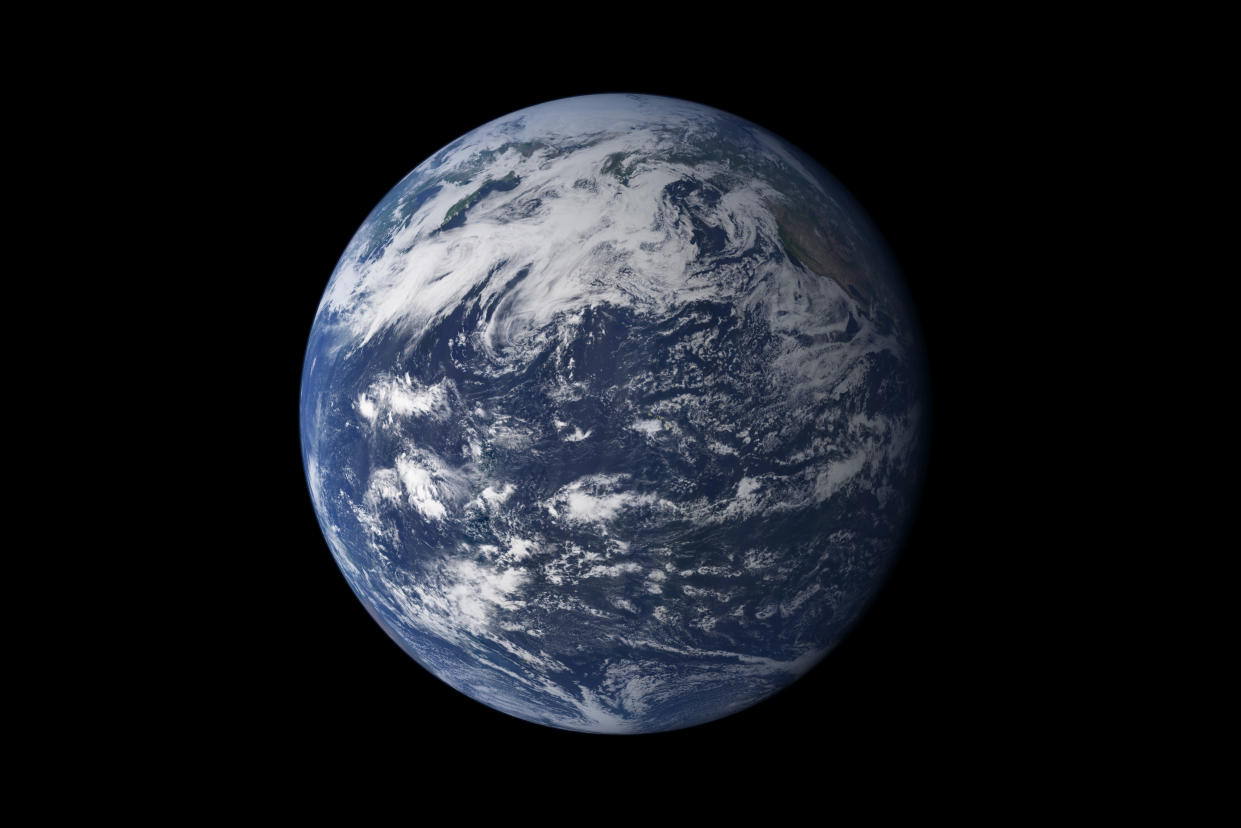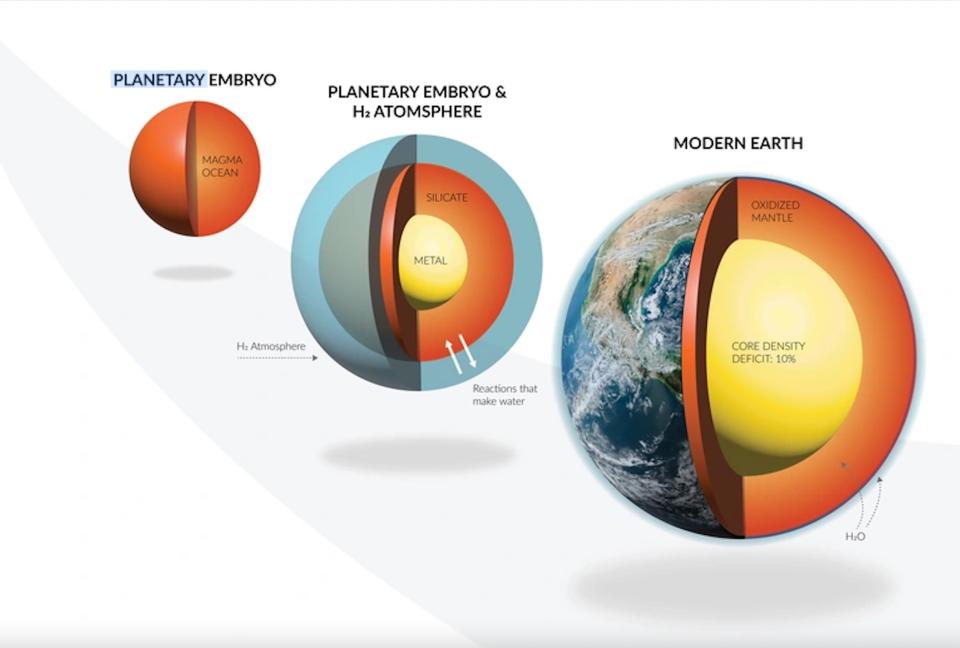No asteroid impacts needed: Newborn Earth made its own water, study suggests

Contrary to a popular theory that icy comets or asteroids delivered water to a dry newborn Earth, the planet itself may have produced its earliest water supply, a new study suggests.
This water would have stemmed from chemical interactions between an atmosphere rich in hydrogen, which researchers think enveloped the young Earth, and massive oceans of magma on the planet's surface.
In these conditions, "water forms as a natural byproduct of all the chemistry that takes place," study co-author Anat Shahar, a scientist at the Carnegie Institution for Science in Washington D.C., told Space.com.
Related: How did Earth form?

Earth's uniqueness in the solar system is partly due to the abundant water that dominates over 70% of its surface, which is a lot more than any other planet in our cosmic neighborhood. Yet, when and where so much water came from remains an ongoing mystery for which scientists have not yet found a direct, conclusive answer.
One popular theory posits that asteroid impacts likely delivered most of the planet's water, but some research has shown that the water locked inside asteroids is chemically different from the water on Earth. Now, scientists say the abundant water supply that made Earth the watery world it is today arose thanks to a hydrogen-rich atmosphere early in the planet's history.
According to the latest study, homegrown water would be the outcome if the newborn proto-Earth was 0.2 to 0.3 times the planet's current size — slightly bigger than previously thought. (Earth continued to grow, of course, accumulating more and more surrounding gas and dust.)
In that case, the young Earth would have been massive enough to hold onto its atmosphere for a long time, such that it would have been far richer in hydrogen than the trace amounts we see today. (Earth's current atmosphere is 78% nitrogen; hydrogen comprises just less than one part per million of the planet's protective blanket).
"Simply by changing the early conditions with which Earth formed, we are able to produce lots of water that goes both into the planet and into its atmosphere," Shahar told Space.com
Such hydrogen-rich atmospheres are regularly spotted around many newly formed rocky planets beyond our solar system. The most common types of exoplanets are super-Earths — worlds bigger than Earth but smaller than Neptune — and the ice giant's smaller cousins called mini-Neptunes. Astronomers have previously found that the atmospheres of some of these exoplanets have traces of water vapor, even on worlds that have high temperatures and pressures.
Young exoplanets commonly host hydrogen-rich atmospheres "during their first several million years of growth," Shahar said in a statement. "Eventually these hydrogen envelopes dissipate, but they leave their fingerprints on the young planet's composition."
So rather than learning about exoplanets by studying Earth, Shahar's team reversed the norm by treating Earth as an exoplanet instead to understand its early years in a new way. Tapping into the findings from exoplanet studies, the team simulated a hydrogen envelope around a young Earth and studied what that would mean for the planet's evolution.
"What we found is that by simply treating Earth as an exoplanet (surrounded by hydrogen) we were able to explain many of Earth's characteristics, including its water content," Shahar told Space.com.
Related stories:
— Planet Earth: Everything you need to know
— How did Earth get its water? Moon rocks suggest it might have been here all along.
— Meteorites reveal how they brought space water to Earth
For the study, researchers developed a model to study 25 compounds and 18 different chemical reactions. They found that massive amounts of hydrogen from the atmosphere would have blended with the molten magma oceans on the surface below, which later solidified to form Earth's largest and thickest layer, the mantle. The planet's abundant water stock then formed as a simple consequence of these chemical reactions, they found.
The team says such movement of light hydrogen molecules from Earth's atmosphere into its molten interior early in Earth's history answers two long-standing open questions: How large amounts of liquid water came to exist on Earth's surface and why the planet's core, which is mostly iron, is less dense than what scientists think it should be.
"We learned something new about our own planet by looking at a large dataset of exoplanets," Shahar told Space.com. "Answering the question from the lens of both Earth science and astronomy was key!"
The new study was published Wednesday (April 12) in the journal Nature.
Follow Sharmila Kuthunur on Twitter @Sharmilakg. Follow us on Twitter @Spacedotcom or on Facebook.

